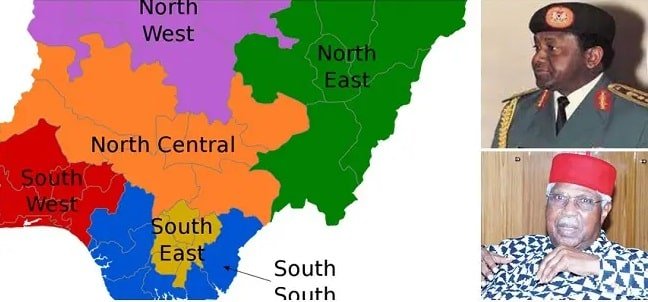Nigeria has been divided into 6 Geopolitical Zones, but can you tell which state falls into each geopolitical Zones in Nigeria? The answer to this question is No, but we will learn that today in this guide. Your children might be asked to list the six geopolitical Zones in Nigeria, which might be hard for you to tell them off the head.
How and when did Nigeria divide into six geopolitical Zones

In the 1980s, a powerful politician from the “former” Southern area of Nigeria proposed dividing Nigeria into six distinct political regions.
He was concerned that the Hausa-Fulani, using the “one” North political gimmick to oppress other Northern ethnic groups and the rest of the country, would continue to dominate politics.
Thee military administration of Sani Abacha in 1995, however, is credited with the definitive establishment of geopolitical zones in Nigeria.
In Nigeria, there are six distinct political regions. The number of states that fall within each of Nigeria’s geopolitical zones is as follows:
1. South West (6 states)
- Lagos
- Osun
- Oyo
- Ekiti
- Ogun
- Ondo
2. South East (5 States)
- Ebonyi
- Abia
- Anambra
- Imo
- Enugu
3. South-South (also known as Niger Delta region, 6 States)
- Delta
- Edo
- Akwa Ibom
- Bayelsa
- Cross River
- Rivers
4. North East (6 States)
- Borno
- Gombe
- Adamawa
- Yobe
- Bauchi
- Taraba
5. North West (7 States)
- Jigawa
- Kaduna
- Kano
- Katsina
- Kebbi
- Sokoto
- Zamfara
6. North Central (also known as Middle Belt, 7 States)
- Benue
- Kogi
- Kwara
- Nasarawa
- Niger
- Plateau
- Federal Capital Territory
Conclusion: Keep in mind that the North-East region has the most total land area. Terrorist organizations like Boko Haram and ISWAP launch their bloodiest attacks from this region.
